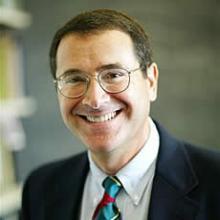Preconception and Creativity
During the winter of 1906-07, Pablo Picasso filled a series of sketchbooks with preparatory studies for Les Demoiselles d'Avignon, the large painting that would eventually come to be seen as his single greatest achievement. The curator William Rubin observed that the 400-studies Picasso made for the painting constituted "a quantity of preparatory work without parallel, for a single work, in the entire history of art."
In the early 1950s, Willem de Kooning worked on Woman I, the painting that is now generally considered his greatest success, over an elapsed period of more than two years. His wife, the painter and critic Elaine de Kooning, recalled that from day to day "I saw hundreds of images go by. I mean, paintings that were masterpieces." But he continued to make changes: "He simply was never satisfied."
Picasso was 26 in 1907, when he completed the Demoiselles; de Kooning was 48 in 1952, when he finished Woman I. The difference in their ages was not an accident, for studies of hundreds of painters have revealed a striking regularity - the conceptual painters who preconceive their paintings, from Raphael to Warhol, consistently make their greatest contributions earlier in their careers than experimental painters, from Rembrandt to Pollock, who paint directly, without preparatory studies.

The objection is sometimes made that the difference in practice is insignificant: both types of artist do research, some simply choose to do it before beginning to work on the canvas, and some after. The significance, of course, is intellectual. When we look at a painting, we may not care whether or not it was preconceived, but an artist's choice of whether to preconceive his paintings is a predictor of his life cycle of creativity.
In other activities, the difference may have greater practical consequences. It is not surprising, for example, to find an architect accepting the importance of the distinction between execution of a preconceived plan and experimentation with a work in progress. Thus in a videotaped seminar the architect Elena Manferdini reflected that it had taken her several decades to recognize her category, but that it would have been useful to have seen this earlier.

Frank Lloyd Wright was a great experimental architect. He believed that the plan for a building did not complete the design, but "may be thrown away as the work proceeds;" indeed, the greatest buildings were altered during construction, "because the concept grows and matures during realization." Wright regularly altered buildings under construction, with inevitable delays and cost overruns, and used his charm and charisma to mollify disgruntled contractors and outraged clients. In one letter to a long-suffering patron, he explained that "the building grows as it is built and is none too easy, therefore, to keep up with."

Frank Gehry is the most prominent experimental architect active today. In 1976, while building a Malibu guest house for Norton Simon, Gehry decided to create a novel visual effect, in the form of a trellis that would look like a pile of wood, caught by the wind, blowing off the roof. Uncertain how to achieve the effect, Gehry worked incrementally, building a layer, looking at it, then repeating the process. After three layers, Simon called a halt, "because it was getting too expensive. It offended him that he was paying for this experiment. He said to me, 'There have been many great artists over time who have not been able to finish their masterpieces. I'm going to add you to the list.'"
Elena Manferdini spoke ironically of the numbers, tables, and charts that traced out artists' creative life cycles, but conceded that she loved "the moment when you can find the visualization of the path of a career, and understand how the nature of the work has an impact on it." Recognizing the significance of preconception, in painting, architecture, or any other activity, is a key to the magic of that moment.

















